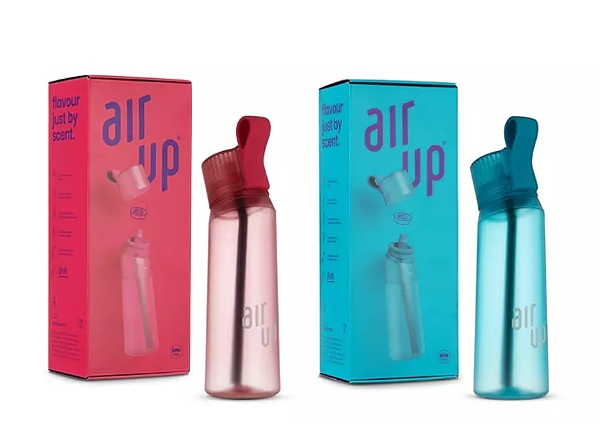GREINER / AIR UP
Production of bottles to ‘flavour' water returns to Austria / Reshoring from China
Developers of drinking system air up (Munich; www.air-up.com) have selected “made in Austria” over “made in China”. While the reusable coloured drinking bottles were previously manufactured by a Chinese processor, they have been rolling off the production lines of Greiner Packaging (Kremsmünster, Austria; www.greiner.at) for the past few weeks. The reason for the change is said to be shorter transport routes for distribution in Europe.
 Now made closer to where they were originally developed (Photo: Greiner) |
The accessory bottles, produced from Tritan copolyester from US resin maker Eastman (Kingsport, Tennessee; www.eastman.com), have been matt lacquered up to now. In future, Greiner said it will use a masterbatch solution with solid-coloured material.
In the course of the production relocation, the inner straw made of HDPE has also been revised: it is now injection-moulded instead of extrusion blow-moulded. The company said this allows for more precise straw production while saving an additional step. Greiner manufactures the injection-moulded lids from ABS, while the silicone mouthpieces are supplied.
The nose knows
The patented system is designed to add flavour to conventional tap water only through scent. For this purpose, an aroma-filled “pod” is placed on the mouthpiece of the bottle. Through the straw, drinkers draw flavoured air into the throat with tap water from the bottle. When exhaling, the scent molecules are said to be perceived as a taste.
“Our brain thinks we are tasting cherry, peach, or apple, but we are onlyconsuming water”, said Magdalena Jüngst, an air up founder. The brand started in 2016 with an idea and a theory on the topic of neuroscience meets design; the market launch followed in 2019. The five founders say they now employ more than 300.
“Our brain thinks we are tasting cherry, peach, or apple, but we are onlyconsuming water”, said Magdalena Jüngst, an air up founder. The brand started in 2016 with an idea and a theory on the topic of neuroscience meets design; the market launch followed in 2019. The five founders say they now employ more than 300.
16.06.2023 Plasteurope.com [252878-0]
Published on 16.06.2023

 German version of this article...
German version of this article...